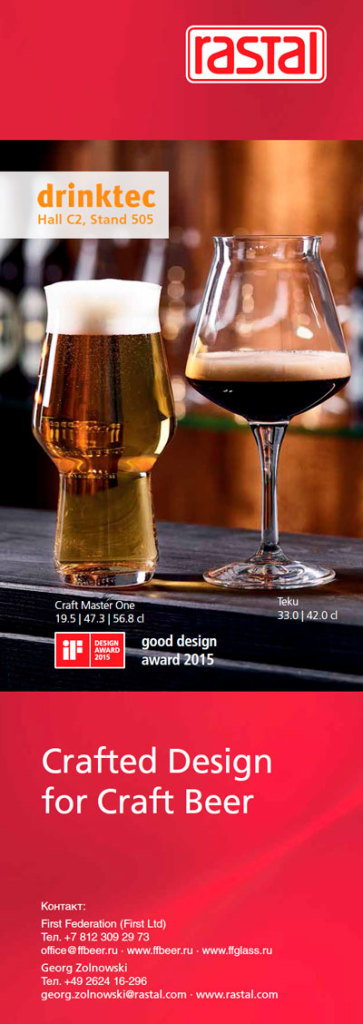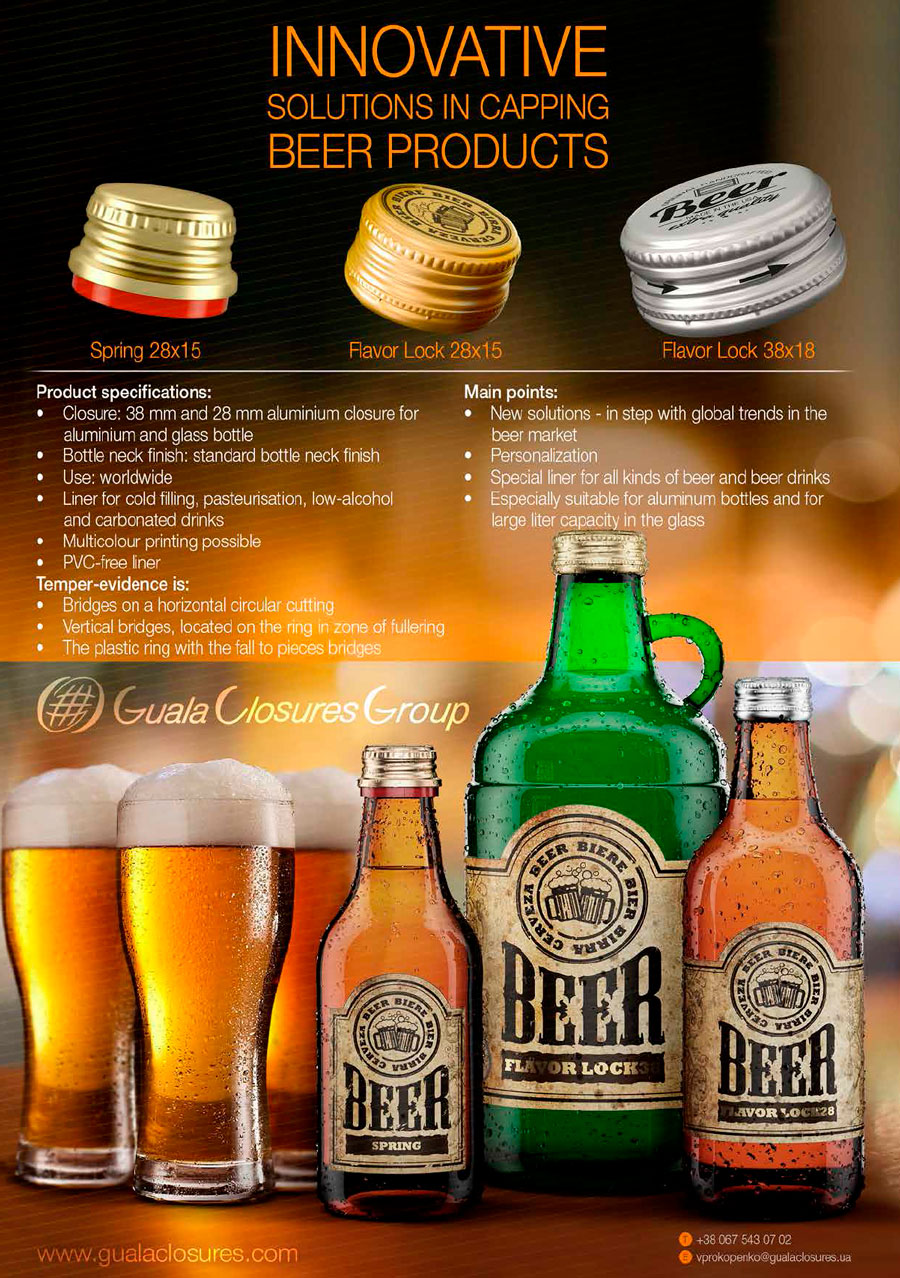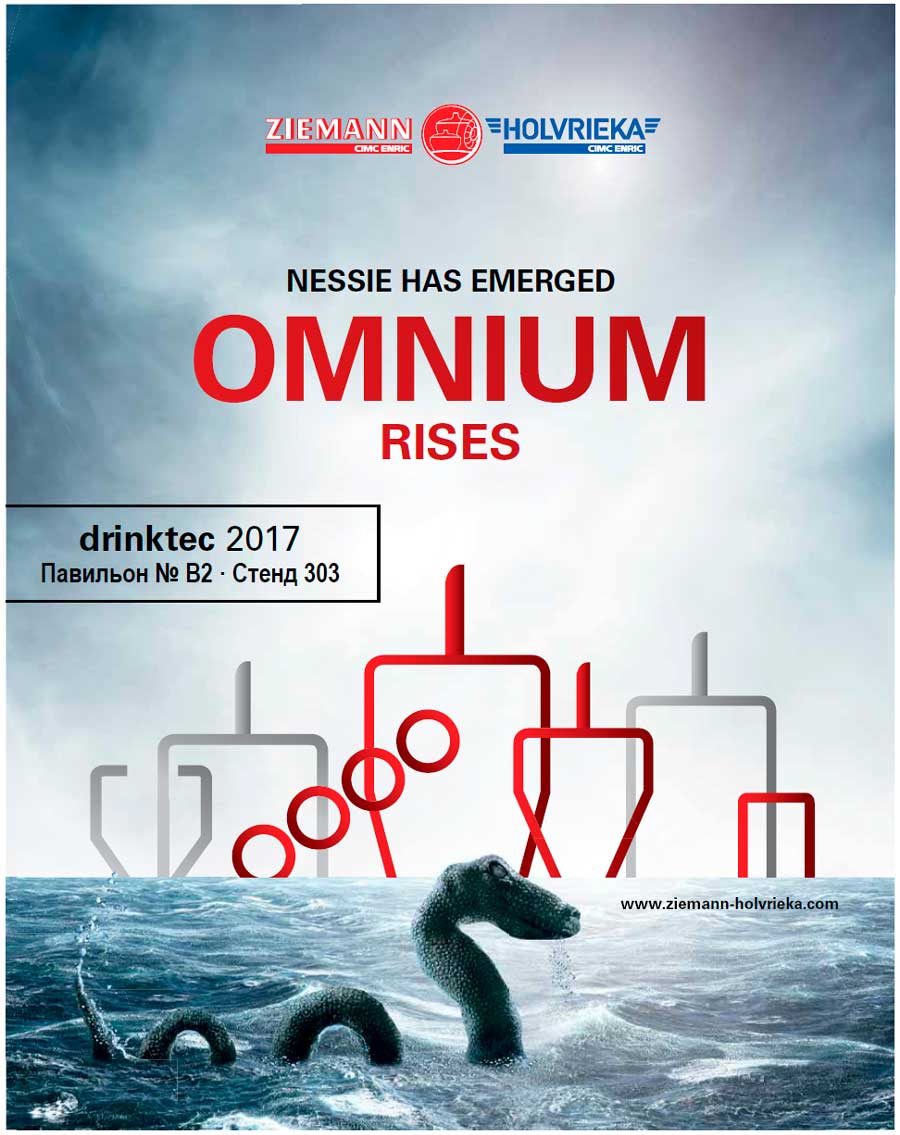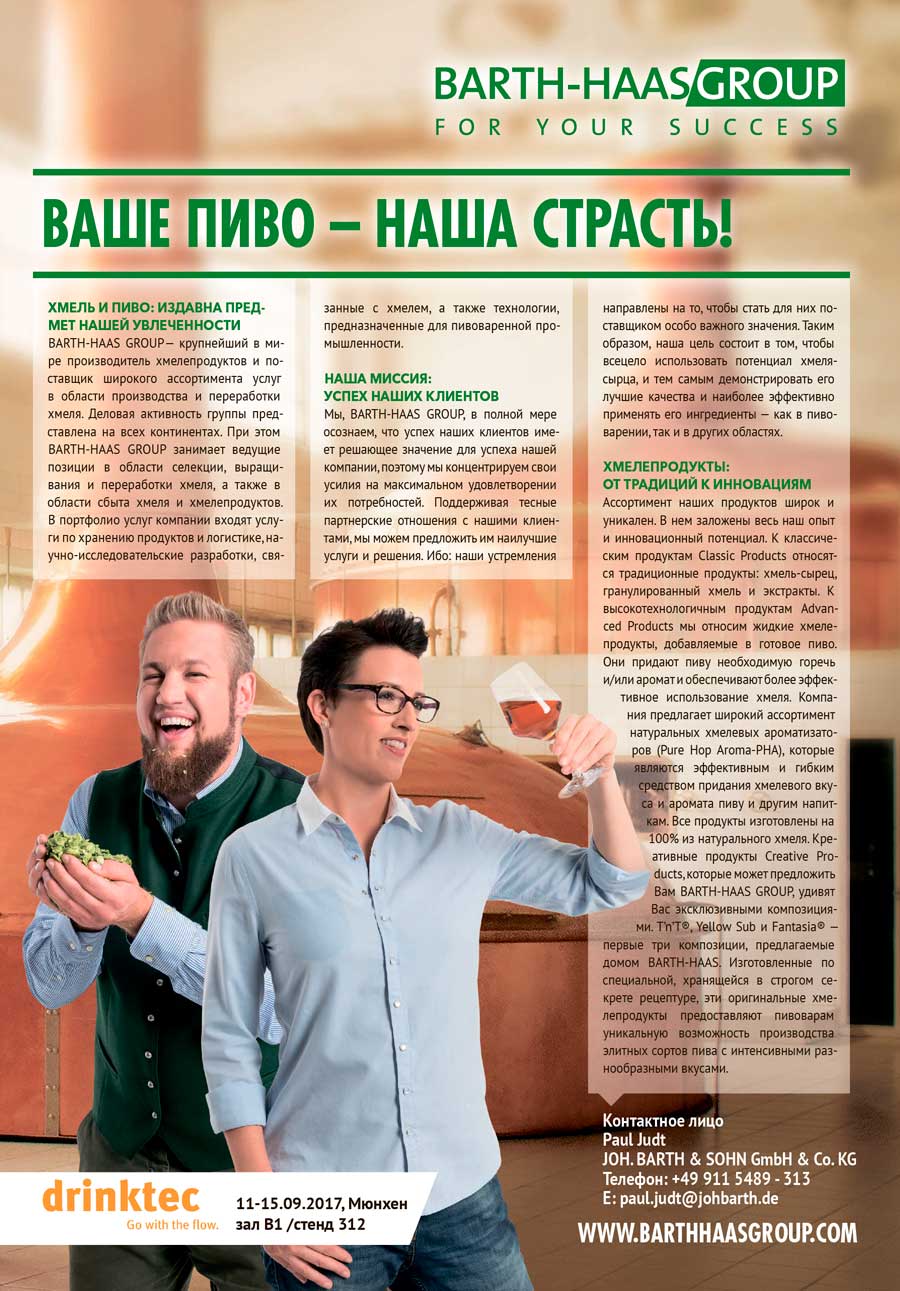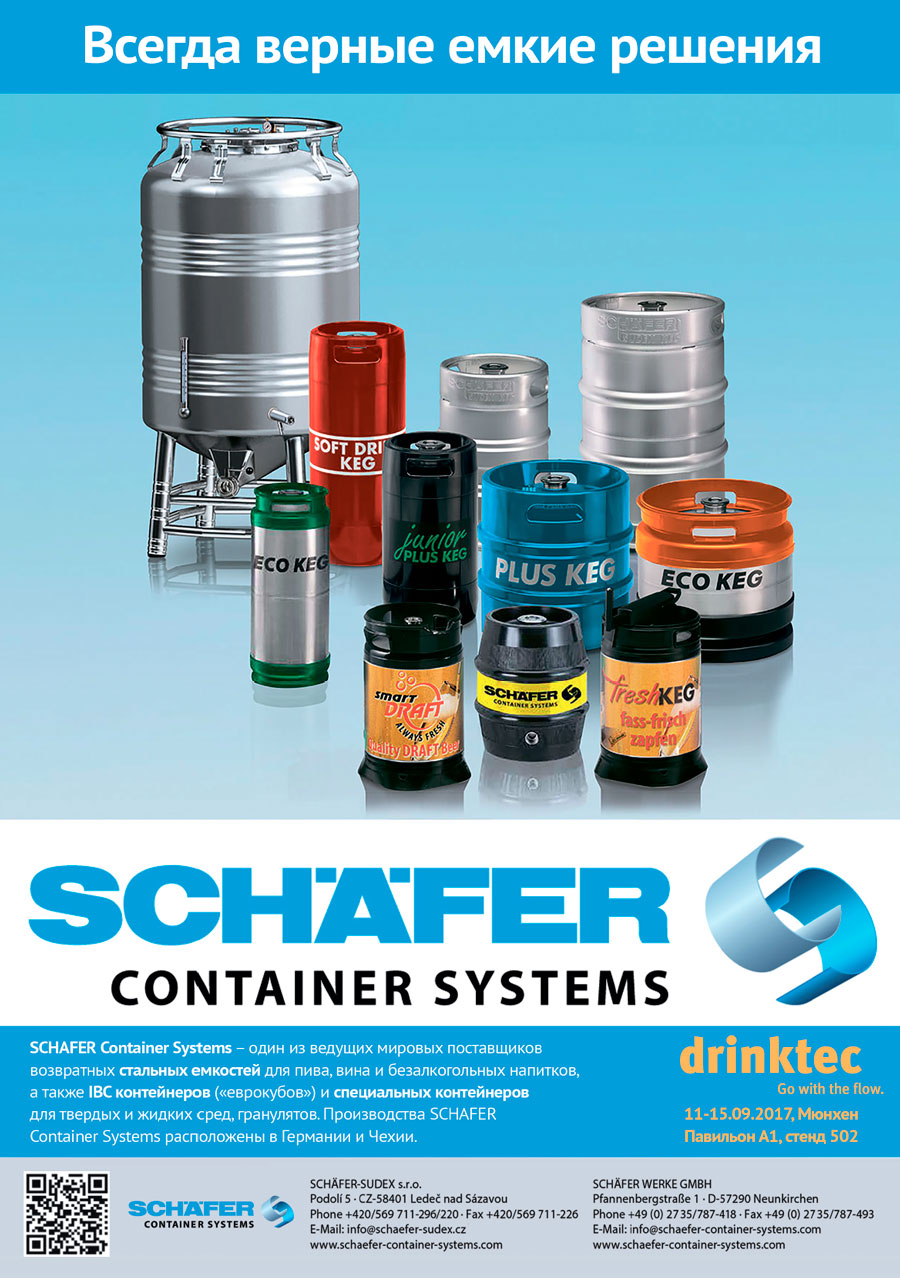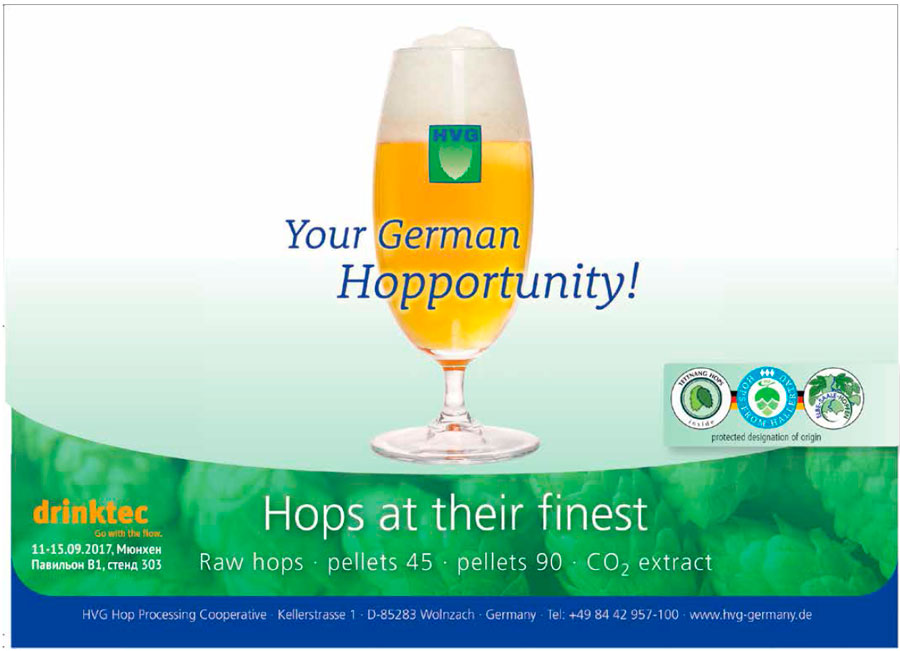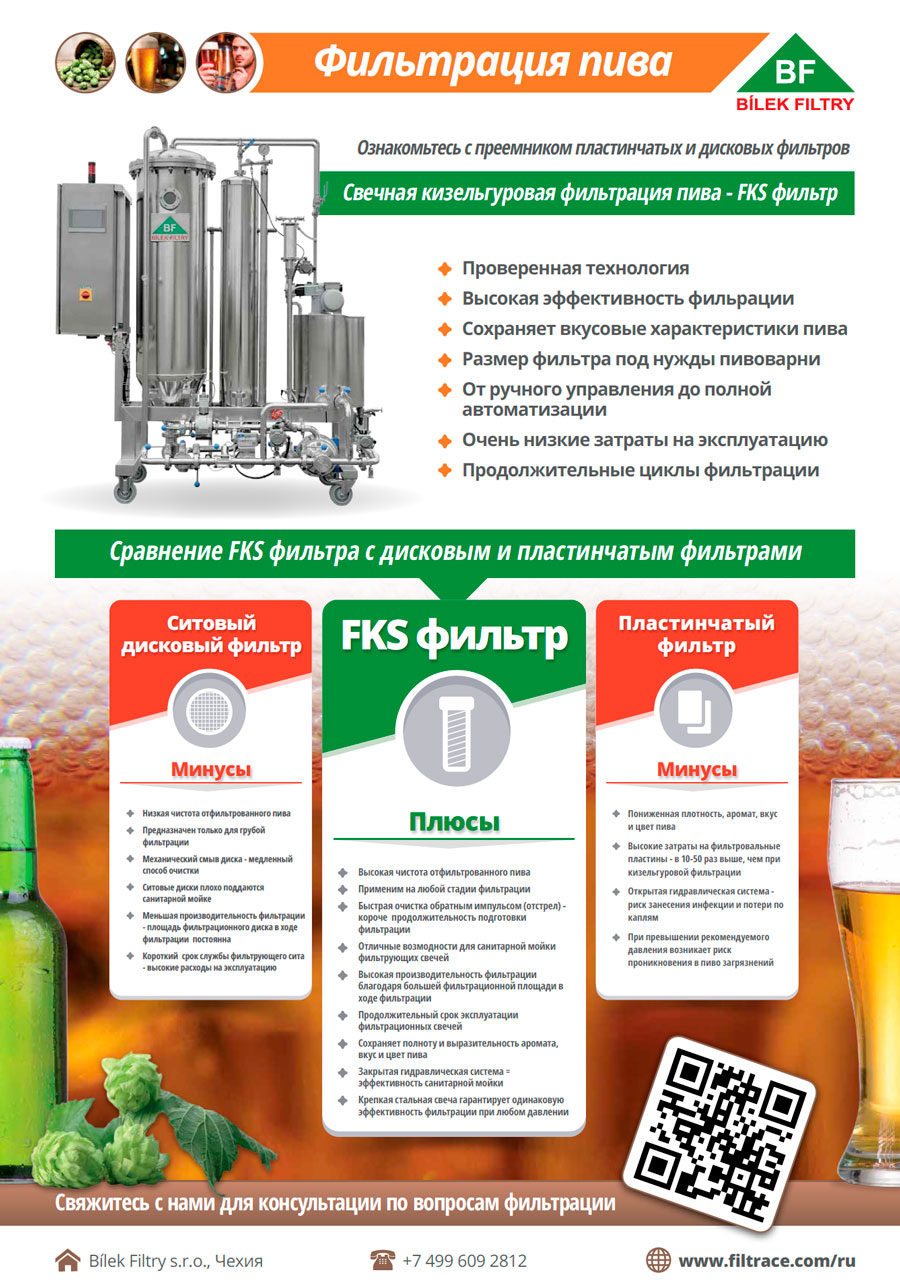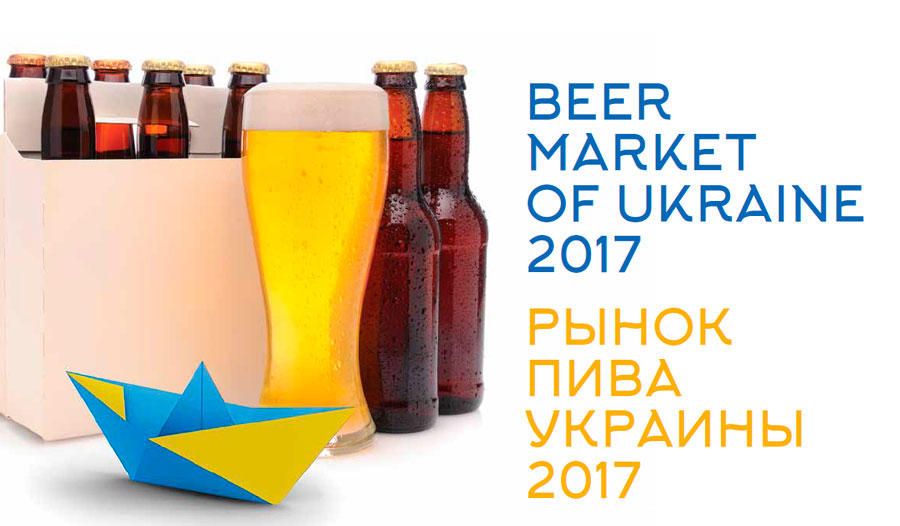
In the first half of 2017, the Ukrainian beer market goes on decreasing slowly. Yet, the companies manage to compensate their lost volumes by raising prices and improving the sales structures. This results in the mid price market segment reduction while the sales of premium brands are rising. These processes are connected to position strengthening of companies Carlsberg Group and Oasis and the market share reduction of Obolon. Most of the novelties by the market leaders belong to craft or hard lemon categories.
Companies and brands
During the first half of 2017, there were changes in positions of many Ukrainian producers. Carlsberg Group managed to transit from decline to increase of output volumes. Dynamics of AB InBev beer output, after stabilization in 2016, went into the red again. Obolon has not so far overcome the negative trend, with its share decreasing rather rapidly. Oasis CIS “PPB” is developing the regional expansion and continues growing. Independent regional producers having left the shocks of the recent years behind, managed to move from stagnation to growth as most of them had a positive dynamics by the end of the first half year, despite the sale price rise.

Carlsberg Group in 2016 cut the beer production by …% to … mln dal. As the market faced a deeper decline, according to the company’s report and audit by Nielsen the company’s market share grew by 0.3 p.p. to 29.9%. Besides, over the last year, the company managed to expand its presence in the modern retail trade, which is currently the major growth driver for the company market share.
In 2017, the prolonged decline of the beer output is likely to stop, as by the end of the first six months, it has already grown by …%.
In 2016, according to the company’s report, the volume of the output by value increased by …%, to … bn hrn. In dollars, in 2016, the beer production has increased nearly by …% to $… and the sales volumes grew by …% to $… mln.
Net revenue of the company in 2016, grew …% to … bn hrn. And the cost value of the beer sold grew by 3%. As a result, Carlsberg Group’s net profit in Ukraine has grown …% to … bn hrn.
High growth rates of production and sales by value are connected to the growth of average retail price of beer. In particular, the period of the rapid growth was continuing from May to September 2016. At the beginning, the average price exceeded the market average, and then equaled the price of the major competitor, namely, AB InBev. The growth of Carlsberg Group’s revenue, as well as the average retail price is linked to the changes in the company’s sales structure.
The problem Carlsberg Group faced is a long-time trend of the market share decrease of the key brand, beer Lvovskoe. The company tried to compensate sales decline of the economy sorts Lvovskoe Svetloe and Lvovskoe 1715 by a subbrand launch of Robert Dorms at the border of mid-preice and premium market segment.
It was not a tactic action, but a rather serious effort to create a basically new brand with characteristic tastes and independent positioning. The company goes on actively promoting the brand, and launched the fourth sort American style Ale, with American hop and ale yeasts in April 2017.
Until now, it has been only partially successful as Robert Dorms, despite active TV advertisement allowed only slightly compensate the volume decline and stopped gaining weight having reached the market peak roughly in … 2016.
However, Carlsberg Group succeeded in slowing down the sales decrease, and then acquiring positive growth rates. The basis for it was laid early in 2016, as the company made two unusual steps.
The first step was change in positioning of Carlsberg brand that migrated from superpremium to mid-price segment. The migration took place both on the Ukrainian and Russian markets at the same time. And the sales fall of premium Baltika sorts can be considered the precondition for the migration. While late in 2015, the market share of Carlsberg amounted to nearly …%, the abrupt price decrease and distribution expansion made it possible to increase the share to …% by the end of 2016. One can expect that by the season of 2018, Carlsberg will possess …% of the market.
One more step that can already be considered successful is transiting brand Seth & Riley’s Garage into the neighboring product category. We can say that Carlsberg Group are looking for new growth points after the kvass and cider markets have been fully developed.
Although fruit-flavored beer has been known to the Ukrainian consumer for a long time, Carlsberg Group is positioning the novelty as a drink of special category “hard lemon” – combination of lemonade and alcohol obtained by natural fermentation of malt and hop. Sober color and not too sweet taste, craft, but strict design as well as the premium to the price makes us see that in case with Seth & Riley’s Garage the emphasis is laid on rather mature and well-to-do clients. Over a very short period of time has attracted curious consumers and probably they liked it, as it has won …% of the market by July 2017.
Thus, though Carlsberg Group went on losing sales of cheap beer and natural volumes in 2016, but changed their focus and raised sales in the marginal market segments, which allowed increasing total and net profit. Probably, the financial performance of Carlsberg Group in Ukraine by the end of 2017, will be not worse.

AB InBev in 2016 reduced their beer production by …% to … bn dal. This performance was the best over the recent 5 years. Yet during the first half year, the output declined by …% under our estimation.
In 2016, the cost of manufactured beer by value grew …% and amounted to … bn hrn, which is approximately equal to $… mln. Beer sales including taxes amounted to … bn hrn or $… mln.
The company’s net revenues in 2016 grew …% to … bn hrn and the cost value of the sold products increased …%. This allowed halving the company’s net loss – to … mln dal.
The sales growth by value in the conditions of volumes reduction can be explained by the company’s price policy.
In 2016, the average retail prices for beer by AB InBev started increasing rapidly, but went down at the start of the high sales season, which secured the market share for some time and positively impacted the final natural volumes. In Autumn the fast price rising resumed and by the end of 2016, they exceeded the market average. It is no wonder that it had the reverse effect and the sales dynamics deteriorated considerably. Finally, AB InBev average prices again came close to the market average in April 2017, which had an immediate influence on the market share.
As almost …% of AB InBev sales in Ukraine is accounted for by brand Chernigovskoe, as a rule changes in the company’s volumes are connected to the brand. Yet, owing to constant fluctuation of the basic sort market share, rather affordable beer Chernigovskoe Svetloe it is difficult to speak of the brand’s influence on the total figure.
We can rather say that over 2016 and the first half of 2017, the negative effect on AB InBev market share was exerted by brands … and …, with prices coinciding with the mid price market segment. One could most clearly see the beer market share market decline of … brand, that like at one time Chernigovskoe, was forced to compete with rapidly growing mid price brands. Many consumers might be used to considering … an affordable beer and find the current price too high.
The current branding policy of AB InBev is focused on launching new premium beer sorts with special tastes and designs and obviously no ambitions for a large market share. In July 2017, the company inspired by the craft beer popularity and Cossack traditions launched beer Khmelevus (Weiss and Lager). And in May, the Ukrainian market got a new international brand Cubanisto “with flavors of rum, orange, and lime” catching the eye with its Latin-American designs.
Asset merging of AB InBev and Efes can lead to substantial changes on the Ukrainian beer market and growth of the joined company’s market share. Basing on the past experience of alliance with SABMiller as well on AB InBev priorities whose shareholders are not likely to find the markets of the Eastern Europe attractive we can expect the key role in the joined business to be played by company Efes
Owing to the armed conflict and loss of the brewery in Donetsk, Efes has virtually disappeared from retail shelves. However, the experience of the past years has shown the Turkish company’s “passionarity” that distinguished it from other three market leaders. Willingness to invest into the markets of Eastern Europe, effective marketing and strong brands all serve as a good precondition for the market share growth despite the loss of material assets.
Back in 2014, mid price brand Bely Medved having …% of the market as well as premium brands Zolotaya Bochka (…%), Velkopopovicky Kozel (…%), and Stary melnik (…%) were rather well known due to TV commercials and national distribution level. These brands were hardly forgotten by Ukrainian consumer and they probably could become a part of the joined company’s portfolio. This will allow strengthening positions in mid price and premium segments, where AB InBev has yielded its share.
Beer production at Obolon company goes on decreasing rapidly. In 2016 we estimated the decline at …% to … mln dal. During the first half of 2017, the dynamics looked a little better – as the decline amounted to …%.
Financial performance amid the price rises also looks clearly negative. According to the company’s report, the net revenues from selling all production categories went …% down to … bn hrn in 2016 (in dollars …%, to $… mln). At the same time, the cost value of the sold production grew …% to … bn hrn. As a result the total profit fell by …% to … bn hrn, and the net loss rose by …% to … bn hrn.
Approximately … of all Obolon sales is accounted for by mid price brand of the same name that is experiencing a gradual share decline at the market and in the company’s portfolio. As beer Obolon is still positioned in the mid price market segment, it faces pressure both from competitors that decrease prices for mass sorts and their own shelf neighbors in the economy segment.
On the one hand, Chernigovskoe and Lvovskoe, being two major mass brands are more affordable than Obolon today. On the other hand, as far back as ten years ago, the company’s focus started shifting to Zibert brand and nearly five years ago to Zhigulevskoe. As in the economy segment sales are determined by retail price, in 2016-2017 the shares of the market of these brands were directly following the prices. Till autumn 2016, the retail price of Zhigulevskoe was higher than that of Zibert, but then fluctuated strongly and in general was at the same level approximately. As a result Zhigulevskoe’s market share in the first … of 2017 has grown and compensated the decline of the major brands nearly by half.
Let us note that the aggregate market share of a range of marginal brands (Desant, Hike, Carling, and others) by the company has remained stable, though their weight in the portfolio comes up to a little more than …%.
Thus, the negative synergy that led to worse financial performance of Obolon results from the fact that the decline of the beer output volumes is followed by the company’s transit to the economy segment, and inside the portfolio, own brands are substituted by beer Zhigulevskoe.
Obolon is trying to fight the sales decline by rather active but “quiet” in relation to advertising promotion, branding policy. The company follows trends and tests consumers’ interest to a lot of new products. Only starting from the year beginning the market was enriched by Piwny Kubek, Hike Alcohol-Free, Hardmix Citrus, Zibert Keller, Obolon Solodovoe, and Obolon Non-filtered. At brewery’s capacities in Fastov a production of the regional sort Yuzhanka was started. And at the end of July, the company took an nonstandard for major beer producers step manufacturing two beer sorts O-Craft brewed on commission at Kiev mini-brewery Unitech.
Obolon has become the main producer of private labels for retail chains in Ukraine thanks to cooperation with the biggest discounter ATB-Market. However, at mid 2016, the market share of the private labels stopped growing having reached …% of the market.
Besides, Obolon continues looking for new opportunities at export markets, by supplying private labels to Belarus companies and outputting localized brands.
Oasis CIS (Persha Pryvatna Brovarnia) continues increasing their output volumes and the market share. Under our estimation, in 2016, the company’s output increased by …% to … mln dal. In the first half year 2017, the growth amounted to nearly …% according to our rough assessments.
The company’s sales bulk is based on various sorts of the title brand Persha Pryvatna Brovarnia with a share of nearly …%. Its sales increased mainly due to sort Bochkovoe. Yet, the biggest contribution into the company’s market share growth was made by economy brand Zakarpatske, that went on winning the market share of Lvovskoe and Obolon. However brand Galytska Korona that has become cheaper will turn up to be a sales driver this year.
The company’s biggest challenge at the mass beer market in 2017 is the price policy of competitors that are forced to make their mass brands more and more affordable. The retail price average for PPB is higher than that of competitors and the portfolio is more balanced. Yet the change of priority – whether to keep the high profitability or to continue developing natural volumes – is becoming more acute.
All recent steps of the company, such as license launch of the most popular import brands and new equipment purchase that has not been done for many years by the market leaders, speak for the zeal to strengthen the premium part of the brand portfolio.
Early in 2016, PPB started outputting beer Heineken under license at Radomyshl brewery capacities. Local production of this brand has been expected for many years, but there was no appropriate site. And in April 2017, a co-owner and CEO of PPB Andrey Matsola in interview to Interfax-Ukraine agency told about the local launch of Krusovice.
Andrey Matsola said that Heineken brand at that time accounted for less than 1% of the Ukrainian market, but in case of favorable economic conditions the share would reach 2%.
“Last year, we bought equipment from KHS company, and now we well pack our products in cans of 0.44 and 0.5 l. The canned beer market in Ukraine accounts for as little as just 6% of the total volume. We estimate our share in it at 10%, as we operate in the upper mainstream and in premium class. We have for a long time planned to install a can line, but before, such project would have been too unprofitable. It is the right time now” – said PPB owner. Besides, he shared the company’s plans to launch production of drink hard lemon at brewery in Radomyshl and enter the category of ciders.
As for the novelty in the category hard lemon, it became known that as early as in May 2017, the company launched two sorts of special beer Green Monkey. And entering the cider category probably means that there will appear English Chaplin&Cork’s which is already imported to the Russian market.

The most of medium size brewing companies in the first half of 2017 increased their output volumes. Out of 10 most prominent regional companies, … showed positive dynamics. The biggest among them, Firma Poltavpivo raised the its output by …%. Yet, the biggest contribution was made by two companies in Ternopol region.
Output volumes of brewery Opillia go on growing rapidly (+…%) not least because of the expansion to the east, in particular to the capital market, where sales of the company’s packed beer are growing.
Besides, Mikulinetskiy Brovar has increased the volumes of production by …%. However, this company is rather restoring its volumes after the decline in 2016. Being well known in all regions of Ukraine, they focused on draft beer, which is mostly sold via special retail.
The official statistics does not make a special group for small producers of beer. Yet, one can assume that their aggregate output volumes and number have grown considerably in 2017, after the law that decreased the cost of license for wholesale beer purchases for minibreweries from 500 thousand hrn to 30 thousand hrn came to force. Though revenue officers continue reporting of illegal minibreweries, there have been only two such messages starting from the year beginning. Instead every month, we hear about several new minibreweries – there have been at least 10 such messages starting from the year beginning.
Market in figures
The dynamics of production and sales in the first half of 2017 was more even than last year. Over the first six months, the beer production fell by 2% to 88 mln dal. The market players also speak of low negative or neutral rates of beer sales in the first half year.

If we estimate the market volume as trade balance, the figures will be a little worse, as the export has grown considerably (by …% to … mln dal over the half year), yet its positive impact on the market was much weaker. Estimated inner shipments have decreased roughly by …% to … mln dal.
The prognosis for the second half of the year can also be either neutral or lightly negative.

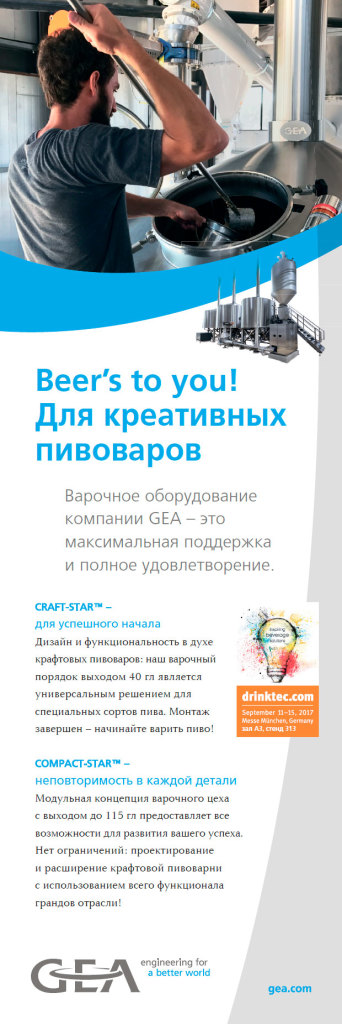
Social and economic factors will probably be of secondary importance in this season. Their significance can be estimated by comparing the consumer sentiment index (CSI) calculated by GFK, Ukraine, to the beer production dynamics. CSI seems to have reached the bottom in spring 2015, and is growing slowly now. In other words, since 2016, the change in the market dynamics was linked to factors specific for the beer market.
On the one hand, the dynamics is affected by the high base effect of July 2016 caused by warm weather. On the other hand, by the time of the article preparation, it is already obvious that in August 2017, sales will be warmed up by the summer heat too.
If this forecast of weather and market dynamics is verified, we will be able to speak of a trend of the market transition from deep downfall to stabilization, at a rather low level though.
After the pressure on the revenues from the economic shock, the excise growth, and hryvna devaluation, it is no wonder that brewers continue raising beer prices in 2017 too. Basing on the official data, in spring 2017, the producer’s weighted average prices began growing rapidly, which reminded the situations in 2015 and 2016. April saw the sharpest increase. However, at the long-time period, the price rise can be called linear or slightly slowing. By June, producers’ prices grew …% against early 2017. Under our estimation, by the end of 2017, we can expect a growth of average weighted prices at about …% compared to 2016.
According to our prognosis of sale price rise and natural volumes stabilization, producers’ revenues from beer sales in 2017 can increase by nearly …% approaching … bln. hrn. In dollars, the producers’ revenues can go by nearly …% up and reach $… mln.
In 2016, the retail price of beer jumped due to the twofold excise increase. The rapid growth continued till autumn 2016, but then the dynamics was multi-valued.
Except for several remarks (caused by different policy of the market leaders) we can say that after a slight correction at the end of 2016, retail price stabilized. In 2017, there was again a …% excise increase, in accordance to the official inflation rates. Such growth did not exert a significant pressure on prices. But in spring 2017, they started creeping again as a result of producers’ prices growth.
All this processes caused a …% rise of average weighted beer price to … hrn for a liter against the first half of 2016. In the second half of 2017, the price increase can be more retained due to the inflation slowdown and exhaustion the last year low base effect.
Basing on data on prices and volumes, we can estimate the beer market scale by value. Over the first half of 2017, it expanded by …% by value in hryvna and by …% in dollar because of the hryvna devaluation. By the end of 2017, we can expect a …% beer sales increase, to … bn hrn. In dollars if hryvna keeps stability, the market growth can amount to …% to nearly $… bn.

In the first half of 2017, if we compare it to the same period of 2016, there have been important changes one can call positive in the price segmentation of the beer market as the sale structure has become more premium.
The economy segment (beer at the average retail price of up to 20 hrn per liter) has remained quite stable despite multi-valued sales dynamics of some brands. Besides, there has been a reduction of the mid price segment (20-28 hrn for a liter) which was in the first place connected to … market share decrease. The premium segment has expanded which can be almost fully attributed to brand … performance. The superpremium segment (28-35 hrn for a liter) has grown mainly thanks to … start, price decline and extensive growth of beer … distribution.
To get the full article “Beer market of Ukraine 2017” in pdf (14 pages, 11 diagrams) propose you to buy it ($30) or visit the subscription page.
2Checkout.com Inc. (Ohio, USA) is a payment facilitator for goods and services provided by Pivnoe Delo.


